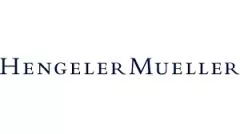When published in September, the Draghi report caused quite some stir in the Brussels bubble and across the continent, with people wondering what impact it will actually have on the bloc's policies. The Commission's Competitive Compass and its Clean Industrial Deal, presented just a few days ago, shed some light on what to expect. Of course, we are most interested in what the Commission has in store in terms of competition policy and enforcement. Let's take a look.
A Compass for Europe
The Commission published the Competitiveness Compass on 29 January 2025.1 The Competitive Compass is intended as a guiding framework for future competition policy and aims to strengthen the innovative power and resilience of Europe's companies, especially in strategically important sectors like AI, semiconductor and digital infrastructure. Reducing bureaucracy is meant to help to speed up administrative processes. The internal market should be further perfected so companies can take advantage of economies of scale.
For the past two decades, Europe has struggled to keep pace with other major economies due to slow productivity growth. However, the EU possesses key advantages, including a highly skilled workforce, a strong Single Market, and a robust social infrastructure. The Competitiveness Compass provides a roadmap to unlock this potential by focusing on three major priorities. Its key elements are:
- Closing the innovation gap. Europe must revitalize its innovation ecosystem by fostering startups, scaling up businesses, and ensuring industrial leadership in key technologies such as AI, biotech, quantum computing, and robotics. The Commission will propose initiatives like “AI Gigafactories” and an “Apply AI” program to promote the adoption of artificial intelligence in critical sectors. A new “EU Start-up and Scale-up Strategy” is supposed to streamline corporate, tax, and labor laws to remove barriers for emerging businesses, making it easier for companies to operate across Europe.
- Decarbonization and ensuring energy competitiveness. High and volatile energy prices are a major challenge for the European industry. The Clean Industrial Deal promotes clean, affordable energy to support manufacturing and energy-intensive sectors like steel, chemicals, and metals (see further below). An “Affordable Energy Action Plan” will work to reduce energy costs, while the “Industrial Decarbonization Accelerator Act” will simplify regulatory processes for transitioning industries.
- Reducing Dependencies and Strengthening Security. To avoid over-reliance on external suppliers, the EU will expand its Clean Trade and Investment Partnerships to secure access to raw materials, sustainable energy, and key technologies. The Commission will review public procurement rules, allowing European businesses to have priority in critical sectors.
The Competitiveness Compass foresees five horizontal enablers that will support its implementation across all sectors: (i) simplification: cutting red tape by reducing administrative burdens by at least 25% for any company; (ii) a stronger single market: a horizontal single market strategy will modernize governance and remove barriers that limit intra-EU trade and investment; (iii) financing competitiveness: the European savings and investments union will improve access to capital markets and ensure that savings are directed into productive investments; (iv) skills and workforce development: a union of skills initiative will focus on lifelong learning, workforce mobility, and attracting global talent to Europe; and (v) better policy coordination: a competitiveness coordination tool will align EU and national policies, ensuring more efficient execution of reforms and investments.
Dealing the Cards for the EU's Future
The Clean Industrial Deal, just launched by the European Commission on 26 February 2025, aims to boost the competitiveness of EU industries while ensuring sustainable growth. Key measures include State aid rules, competition policy & antitrust as well as trade & investment protection.2 In her political guidelines, President of the European Commission Ursula von der Leyen pledged to deliver the Clean Industrial Deal within the Commission's first 100 days, prioritizing EU competitiveness and prosperity. Commissioner Riberia seemed to have delivered exactly that when she unveiled the Clean Industrial Deal which confirms the EU's dedication to its climate goals by offering clear business incentives for industry to decarbonize within Europe.
The Clean Industrial Deal reinforces the EU's economic security, clean transition, and industrial sovereignty. It puts circularity at its core to optimize the raw materials that are most scarce in the EU. In the short term, it will mobilize up to EUR 500 billion.
What about Competition?
That's all well but, you may wonder, what implications will the Competitive Compass and the Clean Industrial Deal have for competition law practitioners… and rightly so. To some extent, only time will tell. However, the documents offer at least a high-level sneak preview.
- Updating the Horizontal Merger Guidelines. Both the Competitive Compass and the Clean Industrial Deal propose an update the Horizontal Merger Guidelines to account for innovation, resilience, and investment intensity in strategic sectors sounds promising and shall ensure that adequate weight is given to the European economy's acute needs. The revised guidelines should better account for the impact on the affordability of sustainable products, clean innovation, and efficiency gains that drive sustainability. The updated guidelines will also assess effects on innovation, market resilience, and the level of investment-driven competition in key strategic sectors. Recalling Draghi, this would seem to suggest a revamp of the section on efficiency defenses and potentially a greater willingness to accept them.
- European champions. The Commission remains silent on the elephant in the room… European champions! Will be Commission's merger analysis continue to focus exclusively on preserving competition or is there some scope for companies to be heard when running a European champion argument – if not by DG COMP, then perhaps by the College? The number of deals with respect to which a “European champion defense” could make a difference may be small, but the impact in those cases could be significant.
- Block Exemption for Technology Transfer Agreements. The revision of the existing framework for technology transfer agreements has been on the agenda for a while. the Technology Transfer Block Exemption Regulation will expire on 30 April 2026. This initiative aims to revise the Regulation and the accompanying guidelines to ensure that companies have clear guidance on what technology transfer agreements they can conclude without risk of breaking competition law. The Competitive Compass picks up the need to refresh the framework, saying that simpler, clearer licensing rules should help businesses share innovations and drive R&D as a pro-competitive force. For now, the Commission would like to hear the views of the various stakeholders and the call for evidence and the public consultation are open for feedback until 25 April 2025. The adoption of the new Regulation is planned for the first quarter 2026.
- Digital Markets Act. The Commission vows to vigilantly enforce the DMA to break open allegedly closed ecosystems seems a positive step if it enables innovative businesses to propose new digital services to customers.
- State aid. The Clean Industrial Deal puts a number of items on the agenda and intends to give the Member States more freedom: (i) clean industrial State aid framework: easing rules for state support in renewable energy, green manufacturing (e.g., steel, cement, chemicals, pharma), and clean tech investments; (ii) simplified State aid framework: streamlining approvals for clean tech projects, set to launch by June 2025; (iii) General Block Exemption Regulation (GBER) review: introducing a safe harbor to allow support measures without prior Commission approval; and (iv) Important Projects of Common European Interest (IPCEIs): Expanding and accelerating large-scale EU-backed investments in strategic sectors.
- Antitrust and Sustainability. As part of the Clean Industrial Deal the Commission reaffirms its commitment to provides informal advice on compliance for cooperation projects aligned with EU priorities.
- Foreign Subsidies Regulation. The Commission vows publish FSR guidelines (by 2026) to assess distortive foreign subsidies and introduces stricter reviews of at-risk mergers.
These fields are flanked by (i) trade and investment protection in form of trade defense instruments, strengthening anti-dumping and anti-subsidy measures as well as (ii) foreign direct investment resilience, which shall ensure that foreign investments enhance EU competitiveness by prioritizing EU ownership, supply chains and innovation.
Turning strategy into action
European Commission President Ursula von der Leyen emphasized that Europe has everything needed to succeed but must act swiftly and decisively. The recent policy documents try to transform the Draghi Report's recommendations into an action plan, ensuring Europe is prepared for future economic and technological challenges. With broad political support, the focus is now on speed and unity to turn vision into reality—because, as von der Leyen put it, “The world is not waiting for us.”
Footnotes
1. COM(2025) 30 final.
2. COM(2025) 85 final.
The content of this article is intended to provide a general guide to the subject matter. Specialist advice should be sought about your specific circumstances.



